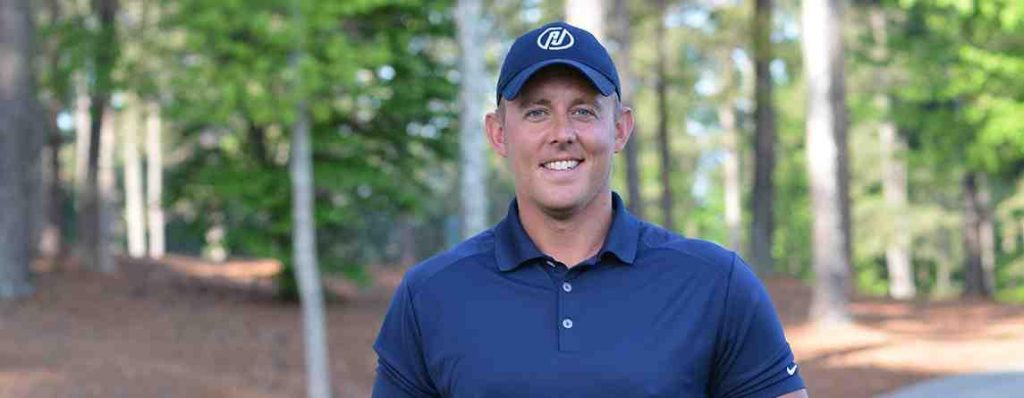You work on your swing for hours on the range. Hitting ball after ball and finally it feels like you have it. You head to the course a couple days later and that awesome swing change disappears… Why? That’s what we tackle in today’s episode.

You need repetition without repetition.
This belief that I’m going to hit a thousand balls and I’m going to create muscle memory. It’s extremely hard and almost impossible to have the level of engagement that you need in each ball to change a motor pattern.
Science has shown us that if you want to change a motor pattern, if you want to make a swing change stick, there’s certain factors that you need in your practice.
You need space between each rep.
You need variable conditions
You need the optimal challenge point
If you want to change your golf swing, you’re looking at changing a motor pattern. To change a motor pattern, you need to fire off what’s called synaptogenesis.
While synaptogenesis is taking place, the brain is engaged, there’s cognitive stress, there’s electricity flying around the brain and changing the neural pathways.
That’s probably happening on ball one, two, three, maybe a little less than four, maybe a little less than five, maybe very low on six. By the time you hit ball seven, that process really stopped and all you’re doing is stimulating blood flow.
Start by working on your golf swing in five ball sets
1 – Full slow motion swing feeling what you want to feel.
2 – Full speed swing without the ball there
3 – Hit the ball focused on that movement.
There you’ve hit one ball but you’ve had three goes at making the movement each with a varying level of difficulty. When it’s slow with no ball, it’s relatively easy to get in the correct position. Then you add some speeds, the challenge point increases and then you add the ball. And I would be very focused on the movement, not the outcome of the ball at this time.
You’re training to change a movement pattern. Now often at first that’s going to lead to poor, a ball striking. So again, you have to have this concept of, Hey, today, am I training to learn or am I training to perform? And if you’re there to change your swing, if you’re there to train, to learn five ball sets, take breaks between each set. Don’t always feel like you have to hit the ball to get feedback, change swing speeds, and um, just really be focused on that specific movement that you’re trying to get into your golf swing

Make sure to pick up Iain’s new book “Golf Practice“. Tons of great games and training circuits to go through that will make your practice more fun and efficient.
Created a golf psychological conditioning program that was implemented at the Nike Golf Academy (UK) Bishops Gate Academy (FL) International Junior Golf Academy (SC).
Iain’s golf psychology program is currently being delivered via the ‘Game Like Training’ virtual classroom to Penn State University, European Tour Golfers and College Golfers
Published author, ‘OSVEA, Practical Ways to Learn Golf’s Mental Game’
Golf Digest’s Top young coach 2017/2018/2019
By balancing your daily recovery, strain and sleep, you will train optimally and unlock the secrets to your body’s true potential.
Recovery – Get personalized daily insight into how ready your body is ready to perform by looking at bio-metrics such as heart rate variability, resting heart rate, and sleep performance.
Strain – For those looking to track more than just steps. Track how strenuous your day is from start to finish and get insight into how much you exert yourself during training.
Sleep – Optimize the way you sleep by getting target sleep times based on how strenuous your day is and your performance goals. Monitor your sleep stages and cycles, time in bed vs actual sleep, sleep efficiency (How much you were asleep while sleeping), and more.
Get email updates to full interviews; exclusive insights; our regular newsletter, the DISPATCH; and our latest education offers.
© 2023 All Rights Reserved. This site is protected by reCAPTCHA and the Google Privacy Policy and Terms of Service apply.